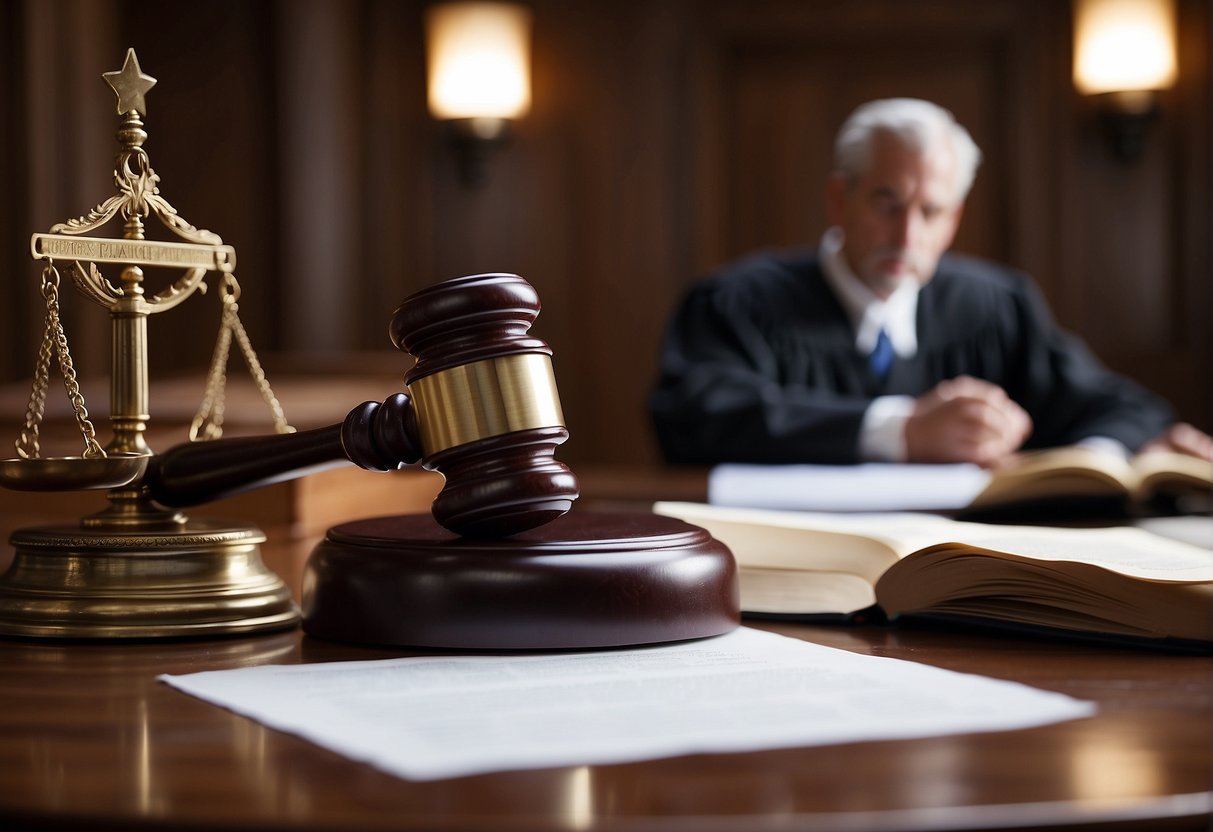Understanding Personal Injury Damages

When we pursue a personal injury lawsuit, our primary aim is to obtain fair compensation for the injuries and losses we have suffered. Understanding the different types of damages that we can claim is critical for us to ensure that the compensation covers all the facets of the harm done.
Compensatory Damages: Economic and Non-Economic
Economic Damages are quantifiable losses that we can calculate. These include:
- Medical Expenses: Costs for hospital stays, doctor visits, physical therapy, medication, and any other medical treatment that we needed due to the injury.
- Lost Wages: Income we lost because the injury kept us away from work.
- Property Damage: The cost to repair or replace our damaged property, such as a vehicle in a car accident.
Non-Economic Damages are subjective and not as easily quantified. They address the less tangible effects of our injury:
- Pain and Suffering: Compensation for the physical pain and discomfort experienced both immediately and in the future due to our injuries.
- Emotional Distress: Compensation for the psychological impact of our injury, such as anxiety, depression, and trauma.
- Loss of Enjoyment: Compensation for our inability to enjoy our hobbies and other recreational activities.
- Disfigurement: If the injury leaves us with permanent scars or other visible marks.
- Loss of Consortium: This damage relates to the impact our injuries have on our relationship with our spouse.
Special versus General Damages
We often distinguish the damages we seek into two categories:
- Special Damages (Economic damages): These are the tangible, out-of-pocket expenses that can be specifically itemized. This refers to things like medical bills, lost wages, and property damage.
- General Damages (Non-Economic damages): These encapsulate the more abstract losses such as pain and suffering, emotional distress, loss of enjoyment of life, and loss of consortium. They are inherently more subjective and demand a detailed understanding to evaluate their worth.
Legal Process and Parties Involved

In personal injury lawsuits, we navigate complex legal proceedings, while key individuals and entities perform distinct roles. Identifying each stage of the lawsuit and understanding the responsibilities of everyone involved is crucial for a successful case.
Stages of a Personal Injury Lawsuit
Initial Consultation: Our first step is to meet with a personal injury attorney to discuss the case details. This is where the attorney assesses the client’s claim and determines the validity based on details such as negligence and liability.
Filing the Lawsuit: Following the agreement to proceed, we initiate the lawsuit by officially filing a complaint in court. This document lays out the case against the defendant and specifies the damages sought.
- Discovery Phase: We exchange information with the defense through a process called discovery, which includes interrogatories, depositions, and subpoenas. This is a critical phase to gather evidence.
- Pre-Trial Motions and Hearings: Our team may engage in various hearings and file motions to shape the upcoming trial, for instance, to exclude certain evidence or to seek a judgment based on the facts established during discovery.
- Settlement Negotiations: Before the trial, both sides often enter negotiations in an attempt to reach a settlement. Our goal here is to secure fair compensation without the need for a trial.
- Trial: If we do not settle, the case goes to trial, where a jury hears the arguments from both sides and renders a verdict on the issues of liability and damages.
- Post-Trial Appeals and Motions: Should the outcome require it, we may file an appeal or post-trial motions to seek further legal remedies.
Roles: Plaintiff, Defendant, and Legal Representation
- Plaintiff: The individual who suffered harm and is seeking compensation. We ensure the plaintiff’s rights are represented throughout the entirety of the personal injury case.
- Defendant: The party alleged to have caused the harm due to their actions or negligence. Defendants may vary from individuals to businesses or insurance companies.
- Legal Representation: The attorneys involved play pivotal roles. A personal injury lawyer argues the plaintiff’s case, while defense attorneys represent the defendant. Our aim as legal representatives is to provide expert guidance and advocate for our clients’ interests.
During litigation, we, as the plaintiff’s attorneys, shoulder the burden of proving the defendant’s negligence and establishing their liability for the client’s injuries. The quality of our representation can greatly influence the outcome of the personal injury lawsuit.
Types of Personal Injury Cases

When we discuss personal injury cases, these legal disputes often arise when one person suffers harm from an accident or injury, and someone else might be legally responsible for that harm.
Common Scenarios Leading to Personal Injury Claims
- Car Accidents: One of the most frequent causes of personal injury claims. When we are involved in a car accident due to someone else’s negligence, we can seek compensation for our injuries, damages to our vehicle, and other related losses.
- Medical Malpractice: If we suffer an injury or our condition worsens due to the negligence of healthcare professionals, we can file for medical malpractice. These cases may involve misdiagnosis, improper treatment, surgical errors, pharmacy errors, and failure to obtain informed consent.
- Product Liability: When we use a product that is defective or dangerous and it results in injury, we can file a product liability claim. This can include a wide range of products, from defective medical devices to unsafe children’s toys.
- Wrongful Death: When we lose a loved one due to someone else’s wrongful actions or negligence, we can pursue a wrongful death claim. This could be a result of any type of personal injury scenario, such as a car accident or medical malpractice.
- Dog Bites: Owners can be held liable when their dog bites us and causes an injury. The specifics can vary by jurisdiction, but in many cases, strict liability rules apply, meaning the owner is responsible regardless of the dog’s previous behavior.
- Defamation: We have the right to file a personal injury claim if someone makes false statements that cause reputational harm. This can encompass libel or slander and requires proof of an untruthful statement and damage to reputation.
- Battery: If we are the victims of battery, an intentional unpermitted act causing harmful or offensive contact with our “person,” we can file a personal injury claim to seek compensation for our damages.
By learning about these scenarios, we arm ourselves with the knowledge necessary to navigate through the complexities of a personal injury claim.
Additional Compensable Damages
In a personal injury lawsuit, beyond compensatory damages, there are additional damages we may seek. These serve to address more than just the direct costs and losses.
Punitive Damages for Deterring Misconduct
Punitive damages are not related to the direct compensation of a victim’s losses. Instead, we pursue them to punish egregious behavior and deter similar misconduct in the future. Such damages are considered when the defendant’s actions are found to be especially harmful and demonstrate gross negligence or intentional wrongdoing. Judges and juries may award these when the conduct is shockingly reckless or excessive.
- Criteria for Punitive Damages:
- Gross Negligence: A severe lack of regard for the safety of others.
- Intentional Wrongdoing: Deliberate actions that cause harm.
- Misconduct: Behaviors that go beyond mere negligence and show a blatant disregard for the law.
Wrongful Death and Associated Damages
In cases of wrongful death, the damages sought cover a broader spectrum. A wrongful death claim aims to compensate for both the tangible and intangible losses suffered by the survivors of the deceased. Compensatory damages in these claims might include funeral expenses, lost wages the deceased would have earned, and loss of companionship.
- Examples of Wrongful Death Damages:
- Economic: Lost earnings, medical bills before death, funeral costs.
- Non-Economic: Pain and suffering of the deceased before death, loss of love, society, and companionship.
These categories ensure the full extent of harm caused by the wrongful action is recognized and justly compensated.
Financial Considerations Post-Settlement
After receiving a settlement in a personal injury lawsuit, it’s crucial to wisely manage the financial compensation to cover long-term costs and financial losses, including medical treatment and lost income.
Managing Compensation and Long-Term Costs
Financial compensation should be allocated with future needs in mind. We consider the fair market value of ongoing medical care and rehabilitation to map out the anticipated costs. For many, ensuring that the settlement covers future medical costs is essential for long-term financial stability. It’s important to create a budget that accounts for these predicted expenses.
- Medical Treatment and Medical Costs: Utilizing part of the settlement to establish a fund for ongoing treatment can safeguard against depleting financial resources. This fund should be calculated based on current and projected medical costs.
- Current medical costs: Immediate medical expenses post-settlement.
- Future medical costs: Estimated costs of long-term care and potential surgeries.
- Out-of-Pocket Expenses and Lost Income: Addressing the impact of the injury on our capacity to work is critical. Settlement funds may need to support us when our income is compromised.
- Lost income: Covering the wages lost from time off work due to an injury.
- Benefits: Compensation for lost benefits can also be considered in the settlement.
- Future Earning Capacity: Calculate potential future income and how the injury might affect earning capacity over time. This calculation may require expert testimony during the lawsuit to ensure accuracy within the settlement.
- Legal Support: Even after settling, obtaining a free consultation from financial advisors or attorneys can help in understanding the complexities of managing a large sum of money, ensuring we make informed decisions about our settlement funds.
Through diligent planning, we secure our financial future post-settlement by addressing both immediate costs and preparing for potential financial needs that may arise due to our injuries.
Frequently Asked Questions
In personal injury lawsuits, understanding the types of damages one can pursue is critical. We’ll address some common questions about compensatory and punitive damages, calculation methods, non-economic damages, emotional distress, and limits on recoverable amounts.
What is the difference between compensatory and punitive damages in personal injury cases?
Compensatory damages aim to reimburse the plaintiff for direct losses, such as medical bills and lost wages, due to the injury. Punitive damages, on the other hand, are awarded to punish the defendant for particularly reckless or malicious behavior and to deter similar future conduct.
How are compensatory damages calculated in a personal injury lawsuit?
Compensatory damages are calculated by adding up all the plaintiff’s quantifiable financial losses resulting from the injury. This includes actual expenses like medical treatment costs, rehabilitation expenses, lost income, and property damage.
Which factors determine the eligibility for punitive damages in a civil lawsuit?
Eligibility for punitive damages hinges on the defendant’s level of culpability. The plaintiff must typically show that the defendant’s actions were willful, fraudulent, recklessly indifferent, or represent a conscious disregard for the safety of others.
What are non-economic damages, and how can they be claimed in a personal injury case?
Non-economic damages compensate for intangible losses that do not have a fixed monetary value, such as pain and suffering, loss of enjoyment of life, and emotional trauma. Claiming these requires demonstrating how the injury has negatively impacted the plaintiff’s life and well-being.
Can plaintiffs receive damages for emotional distress in a personal injury lawsuit?
Yes, plaintiffs can receive damages for emotional distress as part of their non-economic damages claim. They must provide evidence of the psychological impact of their injuries, which may include testimony from mental health professionals.
What are the limits on damages that can be recovered in personal injury lawsuits?
Limits on damages, often referred to as damage caps, vary by jurisdiction and case type. Some states impose caps on non-economic or punitive damages to avoid excessive awards. It’s crucial to understand the specific laws and limits applicable to a case in the relevant jurisdiction.




